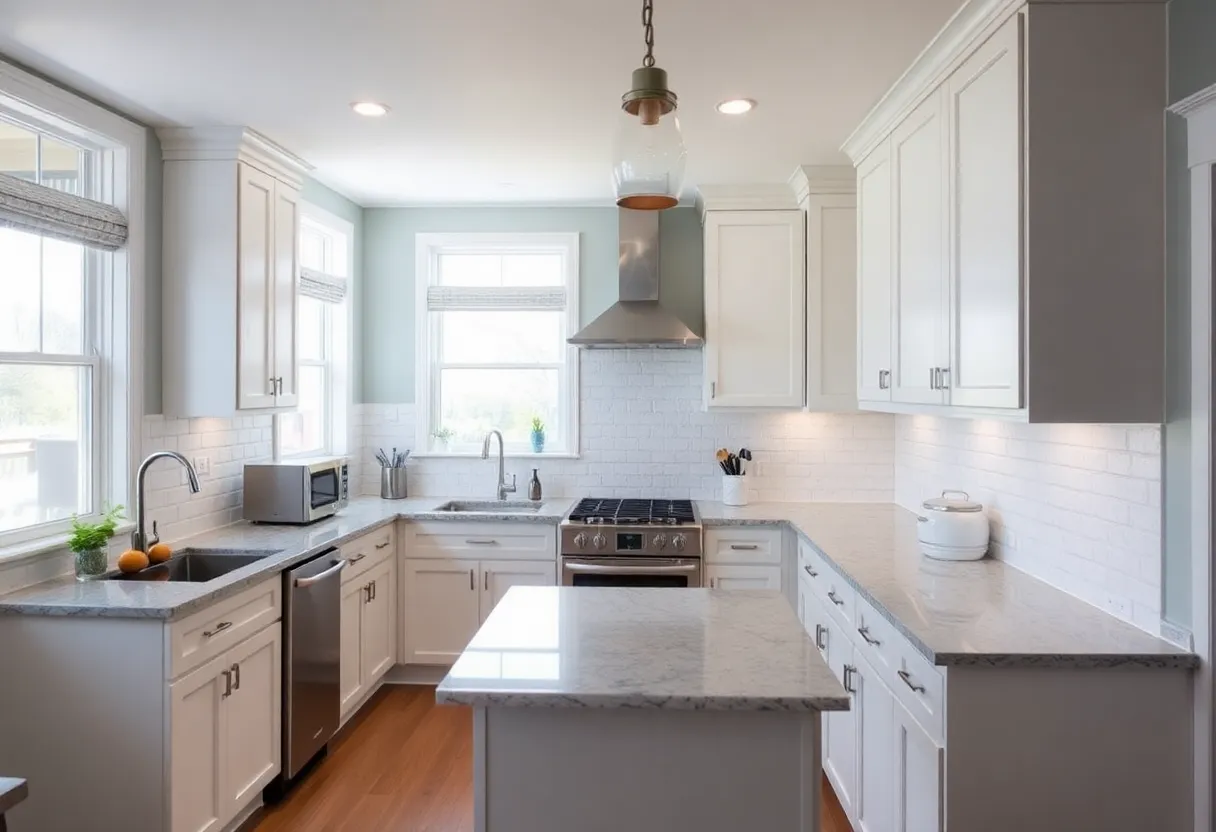What Are the Essential Steps for Planning Your Home Remodeling Journey?
Undertaking a home remodel is a significant investment that requires meticulous planning and strategic execution. A well-organized approach minimizes unforeseen issues, optimizes budget allocation, and ensures the final result aligns with your expectations. This guide outlines the fundamental steps for planning your home remodeling journey, providing clarity and actionable insights for homeowners at any stage of the process.
1. Define Your Goals and Scope
Clarify Your Vision
Begin with a clear understanding of what you want to achieve. Are you aiming to modernize a space, increase functionality, or improve energy efficiency? Specific goals create a focused scope of work, guiding every subsequent decision.
Assess the Scope of Work
Decide which areas require remodeling. Is it a single room or an entire floor? Is the project structural or cosmetic? Precise scope definition prevents scope creep and helps in accurate budgeting.
Prioritize Projects
Determine which elements are most critical. Is a kitchen overhaul more urgent than basement finishing? Prioritization ensures your budget reflects your most pressing needs.
2. Develop a Realistic Budget
Estimate Costs
Gather estimates for all aspects: materials, labor, permits, and contingency funds. Use market averages and recent quotes to inform your budget.
Include a Contingency Fund
Plan for unexpected expenses. Typically, allocate 10-20% of the total budget as a buffer. This prevents disruptions due to unforeseen issues.
Align Budget with Goals
Balance your aspirations with financial constraints. Prioritize essential features and consider phased remodeling if necessary.
3. Engage Professional Expertise
Hire Qualified Contractors
Select experienced, licensed professionals. Verify references, review portfolios, and assess communication skills. Their expertise ensures adherence to code and quality standards.
Consult Design and Planning Experts
Architects or designers can optimize space, improve aesthetics, and enhance functionality. Investing in professional design saves costs and time in the long run.
Obtain Necessary Permits
Check local regulations. Permits are often mandatory for structural, electrical, or plumbing work. Failing to secure permits can lead to fines or project delays.
4. Create a Detailed Design Plan
Develop Renderings and Layouts
Visualize your space through sketches or computer-aided designs. This helps you confirm choices before construction begins.
Select Materials and Finishes
Decide on flooring, cabinetry, fixtures, and paint. Consider durability, maintenance, and aesthetic coherence. Bulk purchasing and early selection streamline procurement.
Establish a Timeline
Create a realistic schedule, factoring in material lead times and contractor availability. Clear timeline management minimizes project overruns.
5. Plan Logistically for the Construction Phase
Prepare Your Home
Clear spaces, protect belongings, and plan for temporary living arrangements if necessary. Proper preparation reduces disruptions and hazards.
Coordinate with Contractors
Set clear expectations, review schedules, and confirm communication channels. Regular updates keep the project on track.
Implement Safety and Compliance Measures
Ensure all work aligns with building codes and safety standards. Adhering to regulations prevents costly rework or legal issues.
6. Monitor Progress and Maintain Flexibility
Regular Inspections
Visit the site frequently to oversee work quality and adherence to plans. Early detection of issues saves time and costs.
Address Changes Promptly
Alterations may become necessary. Document all changes and adjust schedules and budgets accordingly. Staying adaptable ensures project success.
Manage Communication
Maintain open dialogue with all stakeholders. Clearly communicate expectations and document decisions. Transparency minimizes misunderstandings.
7. Completion and Quality Assurance
Conduct Final Inspections
Review work against initial plans and specifications. Check for defects, proper function, and compliance. Address issues before completing project.
Secure Warranties and Documentation
Collect warranty information, manuals, and as-built drawings. This documentation supports future repairs and maintenance.
Plan Post-Remodel Cleanup and Transition
Arrange for thorough cleaning and settle into the renovated space. Consider minor modifications or touch-ups post-completion.
Conclusion
The successful planning of a home remodeling project hinges on thoughtful preparation. By systematically defining goals, budgeting prudently, engaging the right professionals, and managing the workflow diligently, homeowners can transform their spaces efficiently and effectively. Meticulous planning not only results in a satisfying aesthetic and functional outcome but also minimizes stress and financial surprises. Ensuring each phase is executed with precision will ultimately deliver a home that meets your needs and exceeds expectations.
Author: STAFF HERE BALTIMORE WRITER
The BALTIMORE STAFF WRITER represents the experienced team at HEREBaltimore.com, your go-to source for actionable local news and information in Baltimore, Baltimore County, and beyond. Specializing in "news you can use," we cover essential topics like product reviews for personal and business needs, local business directories, politics, real estate trends, neighborhood insights, and state news affecting the area—with deep expertise drawn from years of dedicated reporting and strong community input, including local press releases and business updates. We deliver top reporting on high-value events such as the Baltimore Book Festival, Preakness Stakes, and Artscape. Our coverage extends to key organizations like the Baltimore Chamber of Commerce and Visit Baltimore, plus leading businesses in shipping and healthcare that power the local economy such as the Port of Baltimore and Johns Hopkins Medicine. As part of the broader HERE network, we provide comprehensive, credible insights into Maryland's dynamic landscape.





